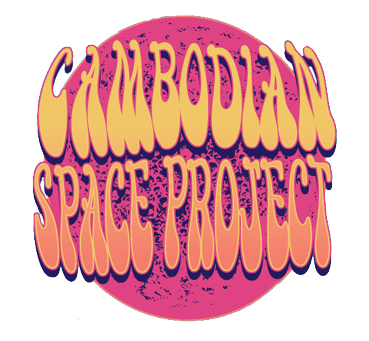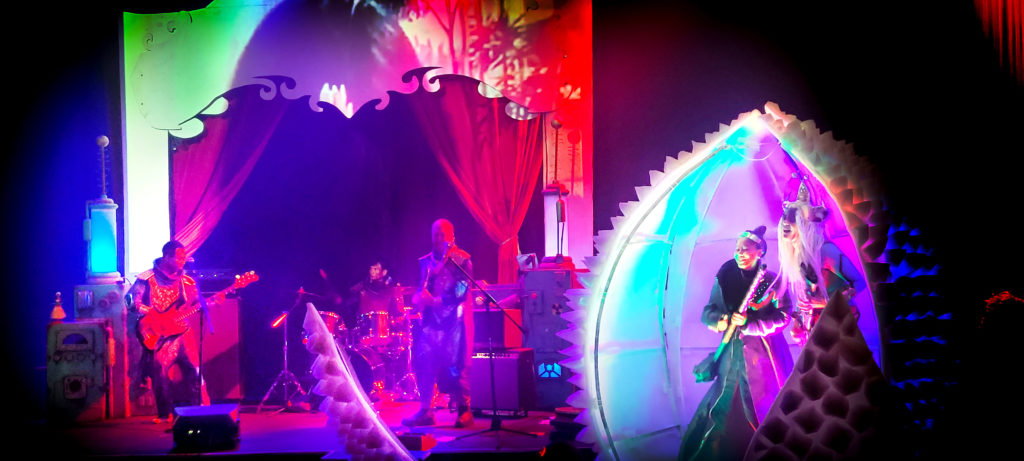
Rat’s in the bag! Yeah! We did it…
The Rat Catcher of Angkor Wat at Oz Asia Festival really felt like a huge achievement and considering it’s been 3 years since designer/director Joe Blanck and I first riffed on the idea – a cosmic, funk-opera set 200 years in the future, with giant puppets and a soundtrack by The Cambodian Space Project – it’s something that has come a long way. From a sketch of an idea to a fully immersive music theatre work that we’ve just had the thrill of seeing come alive and hit the ground running at Oz Asia Festival.
For me, there have been so many great aspects of making this show but first and foremost, it’s been the opportunity of ‘getting the band back together. Around the occasion of my birthday, first week in October, the CSP rhythm machine of Bong Sak and Phea Bass – drums and bass – arrived at our studio at Fish Island Community Arts Centre. I’d kinda left the main event – writing music for the Rat Catcher’s soundtrack – til the last minute and was very conscious of the fact we hadn’t played together during the last 3 years and had just 3 weeks to jam, write, demo, ideas for our new theatre work – booked to go live as soon at we’d land in Melbourne. Still, nothing like a bit of deadline pressure! Bong, Phea and I got to jamming our funky instrumentals. Thankfully, we were at the wonderful new studio The Yellow Sub at FICAC and had the kind assistance of Dan “The Music Nomad” on hand to demo 3 days of jamming. I’m loving these demos, recording in the heavy monsoonal rain, and guiding us into future CSP – a whole new album we’re calling Sovanna Hong / The Golden Phoenix.
The Golden Phoenix is bass-driven, funky stuff indeed. Difficult for us to get our head around at first, I mean how can we make an instrumental album when so much of our previous work has totally depended on the fact we’d been fronted by an amazing vocalist? But on the other hand, this is the best tribute to Channthy, and the best way forward for the core of the CSP – to hit the big stage and to do it without a vocalist – or so we thought. First night of trying out our ideas in Australia was the preview for The Rat Catcher at A Blanck Canvas’s studio/theatre at Seaworks, Williamstown. A crazy-exciting night for sure – finally we were ‘going live’ and immersed, for the first time, in the amazing sets and costumes, the giant puppet/character designs of Joe and the team at ABC. The studio space is at the old Seaworks building right down there on the waterfront, so hanging out and jamming in Williamstown, with stunning views across the harbour to the city of Melbourne an absolute thrill…just the sense of traveling with the band again was and is very exciting and sets the stage for CSP touring in 2023.
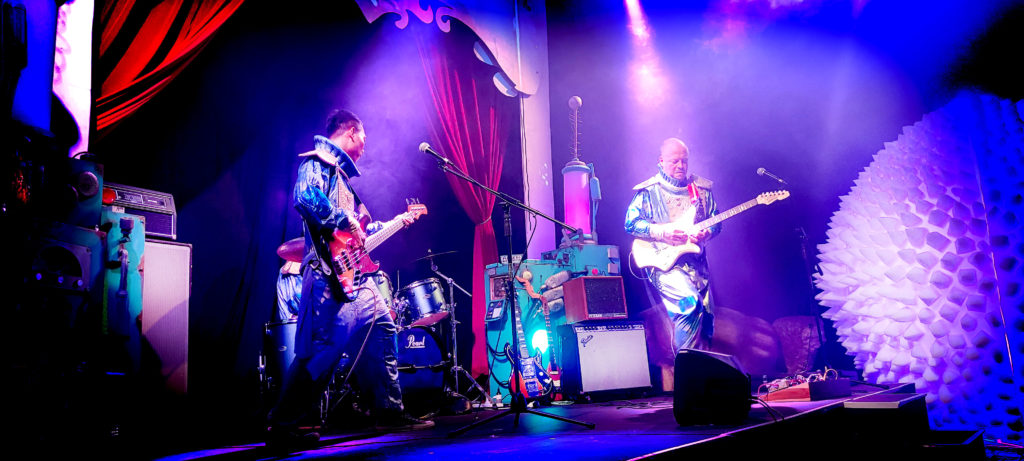
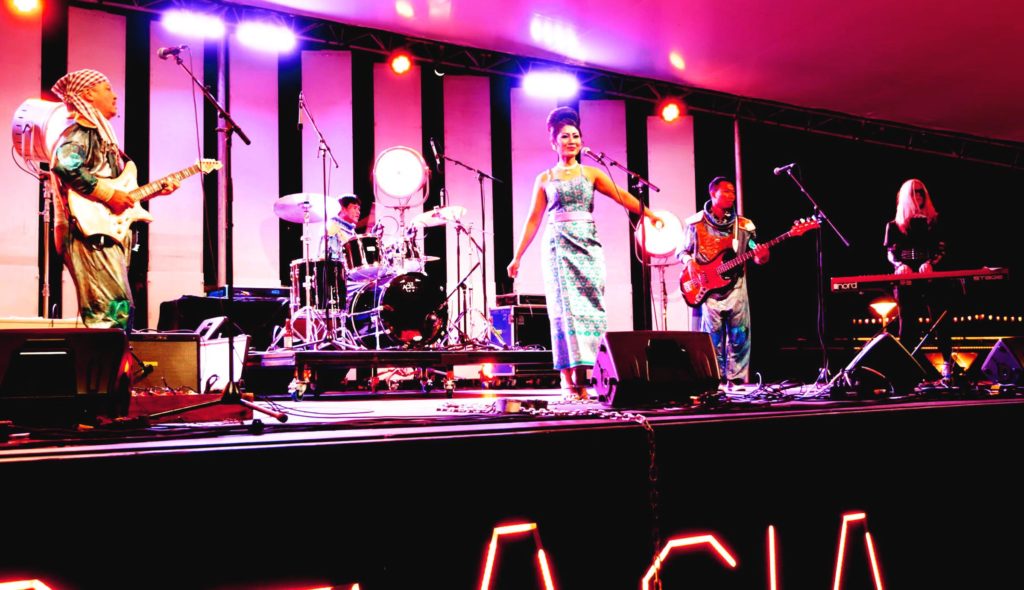
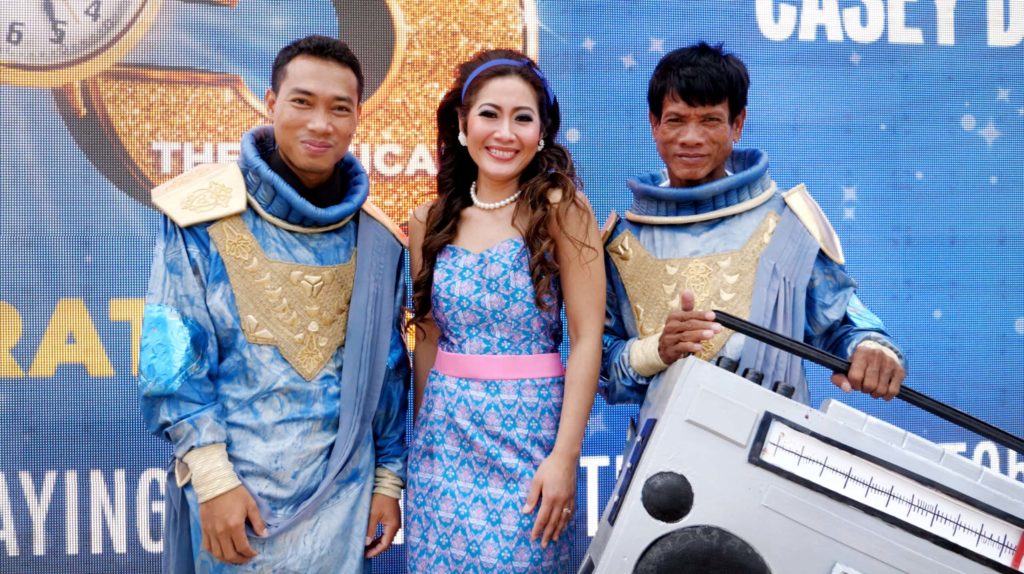
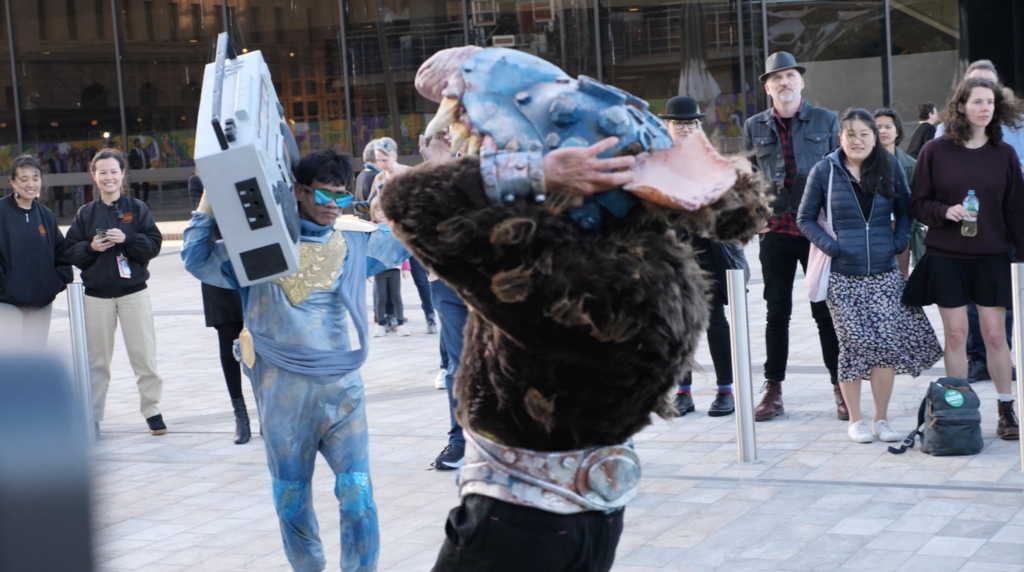
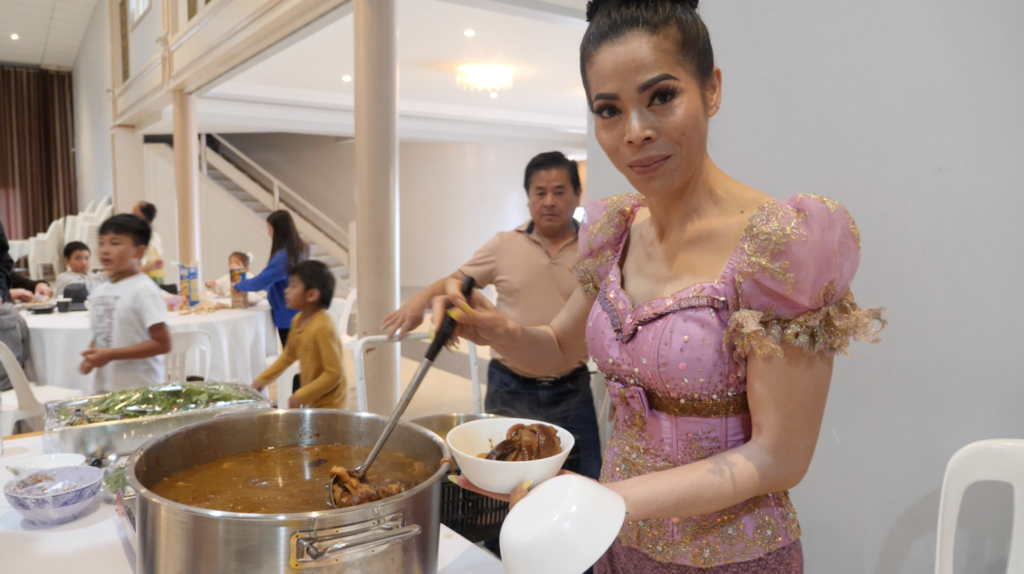
https://www.acmi.net.au/stories-and-ideas/keeping-cambodian-rock-and-roll-alive/
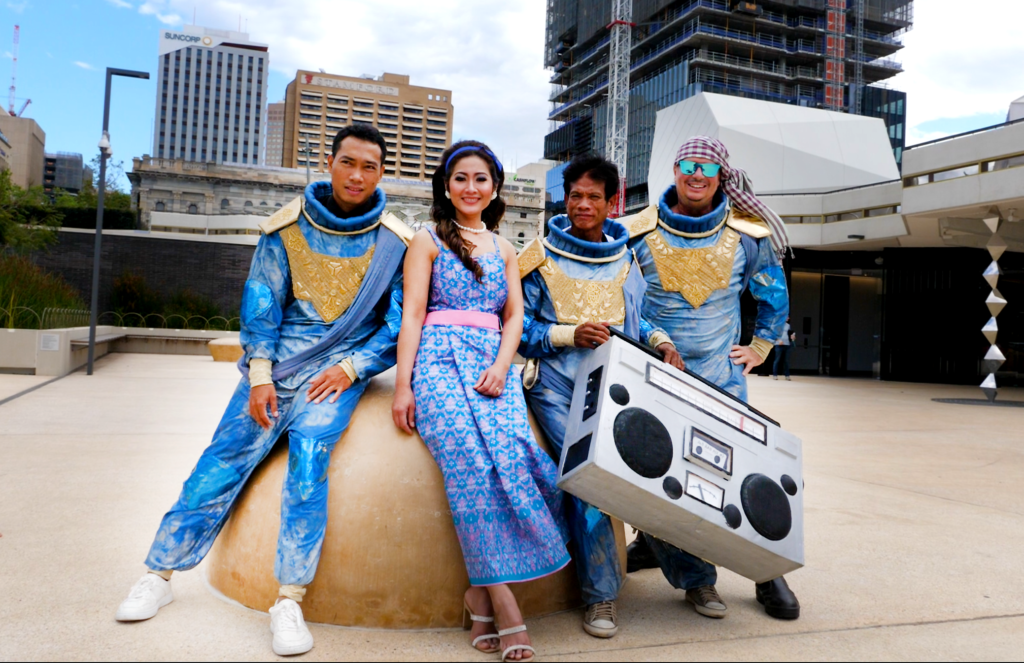
Recording Sovanna Hong/The Golden Phoenix
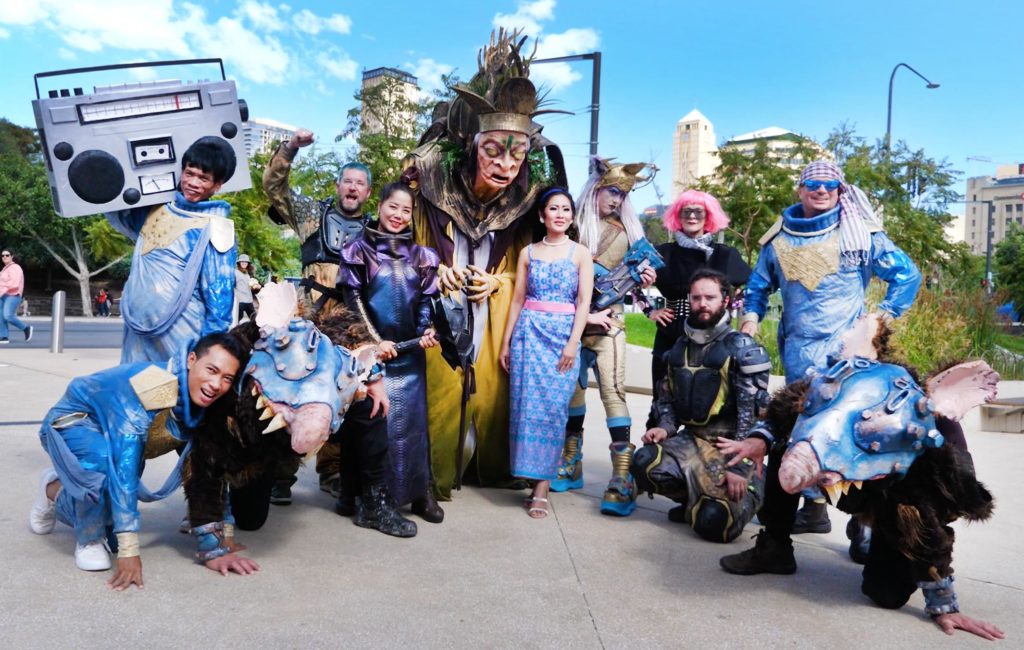
So here we are, tracking The Cambodian Space Project’s 6th album in Melbourne, Australia. It’s quite an emotional leap to take and to dive into a recording session on something that is entirely new material for the CSP and without the voice of Channthy but in many ways this feels like such a good step forward. It’s such a good feeling to have the core of the band back in the studio and to realise ‘Hey, we’re all here for this…let’s see what we can do and do it in the way where we can step into the future’. It’s also a creative venture where we go largely instrumental (or so we thought, until Thyda Chea stepped into the picture). Sessions we’re split between the fabulous Head Gap Studio with with Rohan Sforcina at the helm. Then this followed with sessions at RMIT, working with students who really got the creative vibe and brought a lot of their own ideas into the mix so to speak.
The album’s got some great brass parts thanks to Jack Howard’s arrangements and the horn players of Epic Brass. Jack worked out most of the riffs and charts while working off our very rough-sounding demos sent from Fish Island but this was further enhanced by the opportunity for all of us to get together in person and jam out the new material in Melbourne. It was a godsend to have such a busy schedule of travel, rehearsals, live shows and then studio time and this really helped ramp it up and adds to the playing across the whole set of new music. Julitha Ryan stepping into frame on Sixties style Hammond, Wurlitzer and vintage organ sounds also lit up the sonic atmosphere and it sounds fantastic!
The Golden Phoenix/Sovanna Hong still has a way to go in terms of production… we’re laying in samples and percussion, additional vocals – some of which will be recorded back at the Yellow Sub @ Fish Island, Cambodia, and other bits over in the UK. Overall, it’s a thrilling process and we can’t wait to share this new album with you over the coming months into 2023.
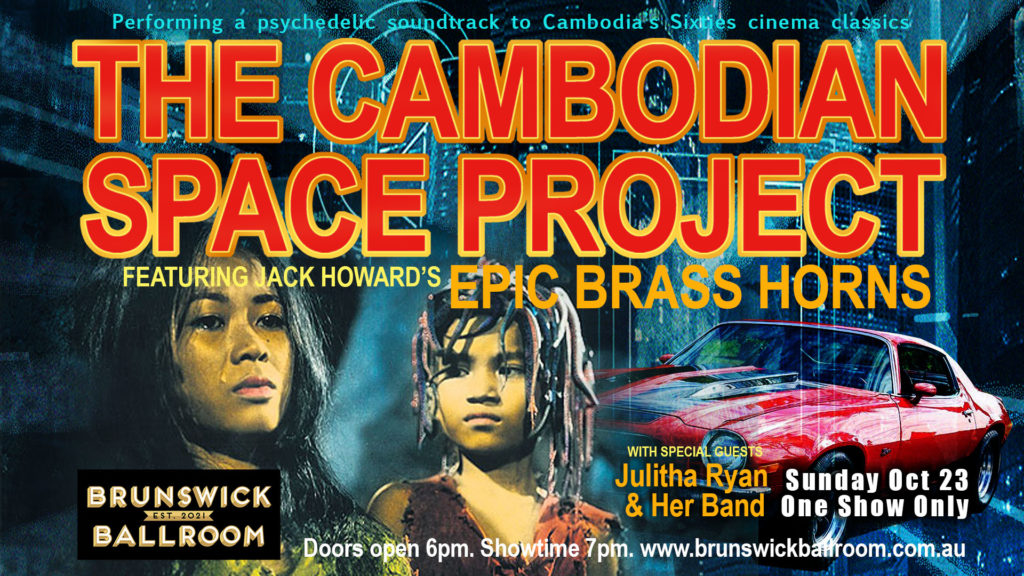
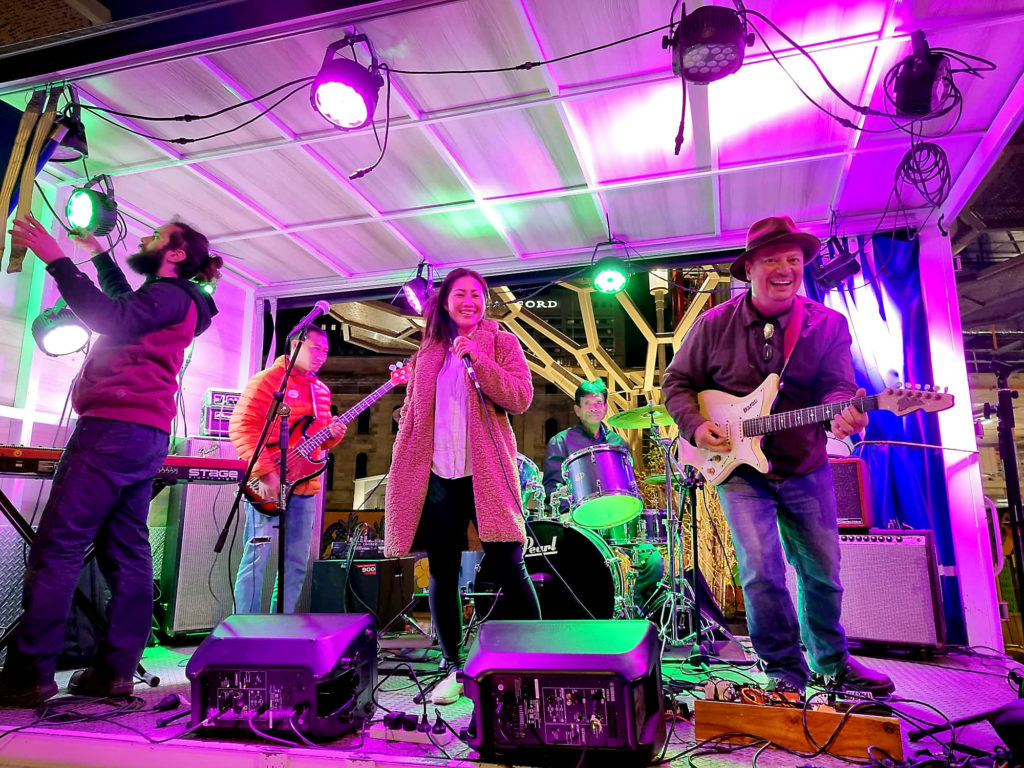

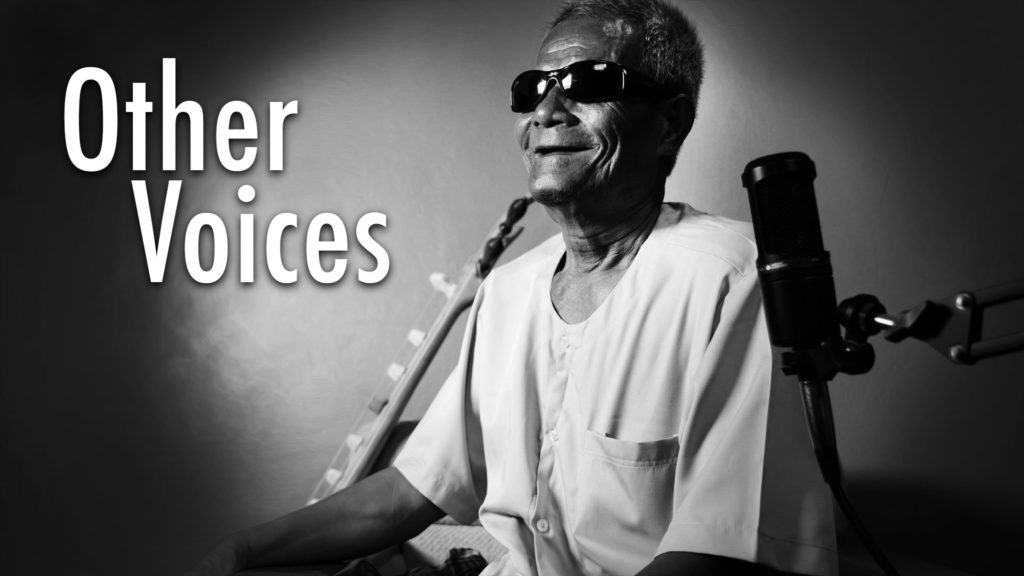
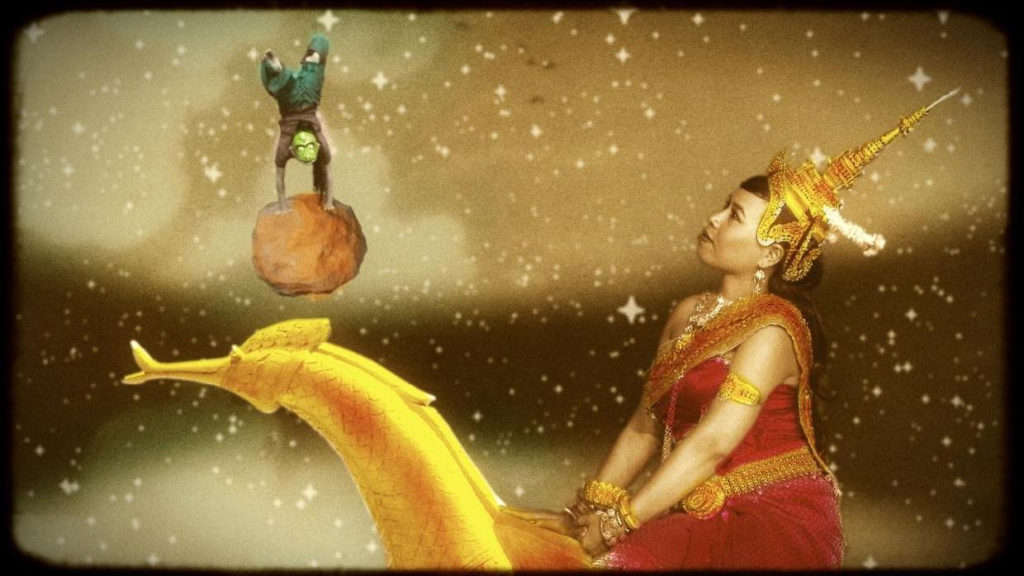
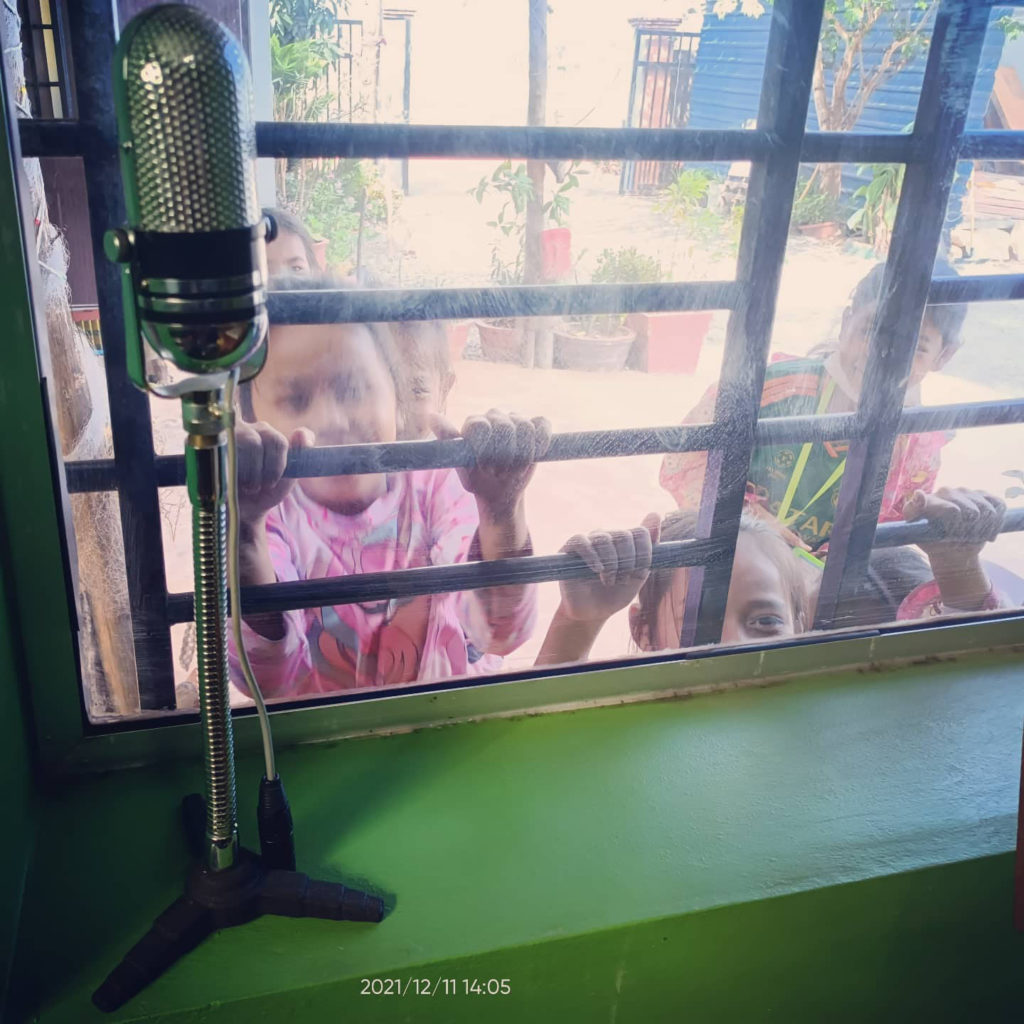
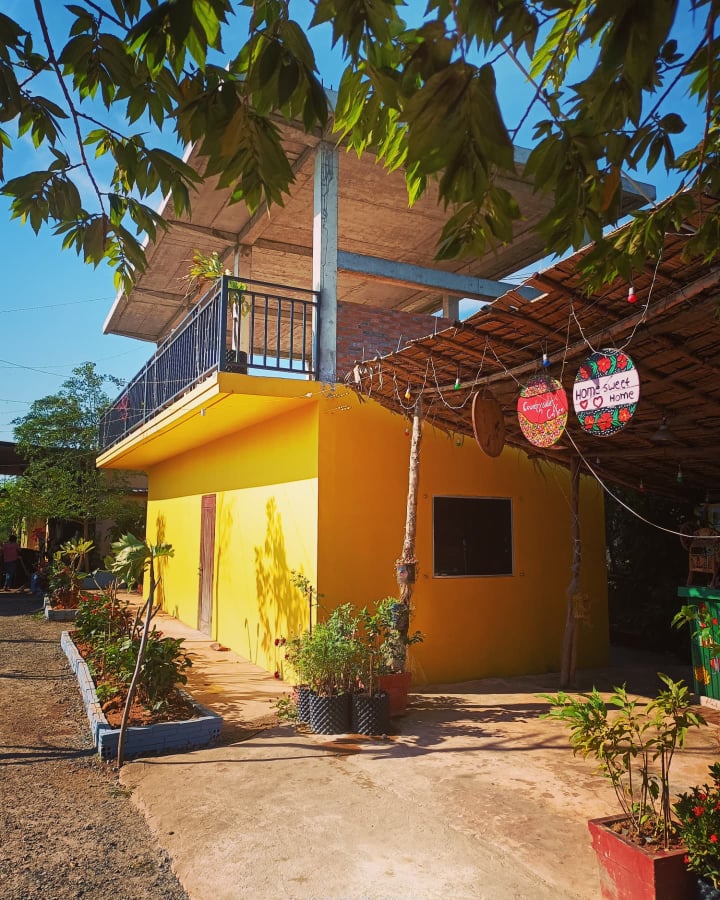
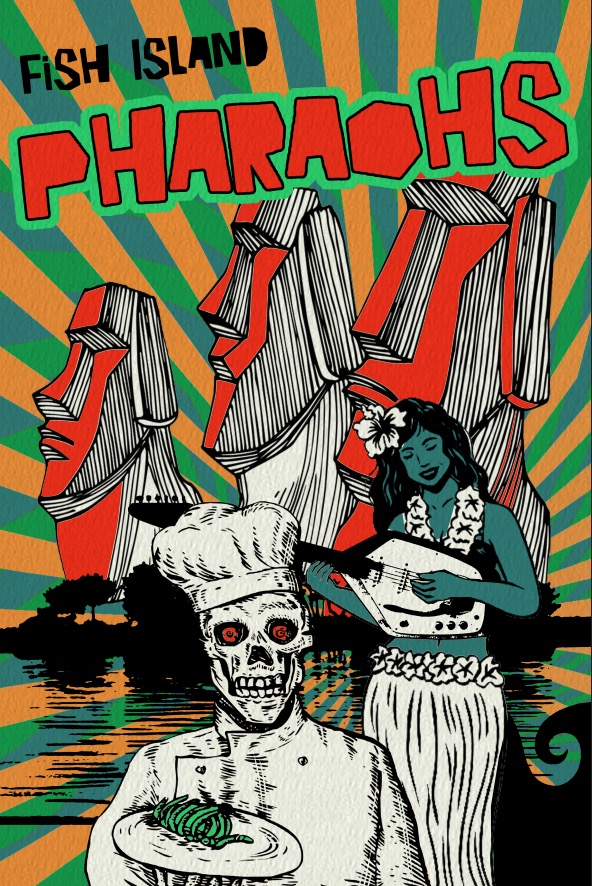
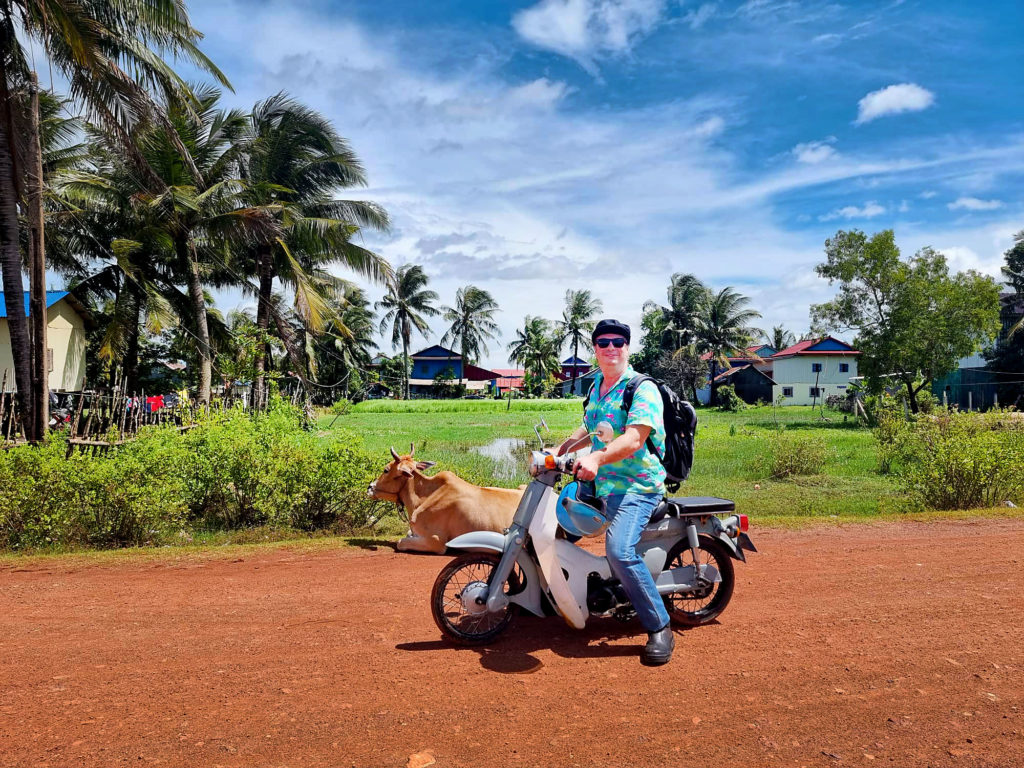
Surf’s Up on Fish Island
Back in Cambodia, I’m getting quite a collection of vintage Japanese instruments, Teisco guitars, retro organs, fuzz boxes, amps, and already retro recording gear… this is just great and feels like a natural direction for our studio at Fish Island Community Arts Centre. The Yellow Sub Studios is very much a work in progress but already producing great results – from local kids recording their own ideas to legacy musicians such as Master Leng Boeun who helped write some of the traditional music and vocal/storytelling on Chapei Dong Veng. But it’s also a great place for extending our work and opening our studio doors to guest musicians and producers – especially kindred spirits in retro surf sounds, garage rock, and psychedelia. To this end we’re inviting some excellent talent to come and live in, work in residency at the Yellow Sub in 2023 and will also continue to bring garage rock’n’roll to Cambodian through our It’s Garage Fest! and take time to not only stage a little festival of wild, weird, out-there rock’n’roll but to get this down to tape and record the whole Shebang! Look out for dates round October/November 2023 and sing out if you wanna get involved in the action.
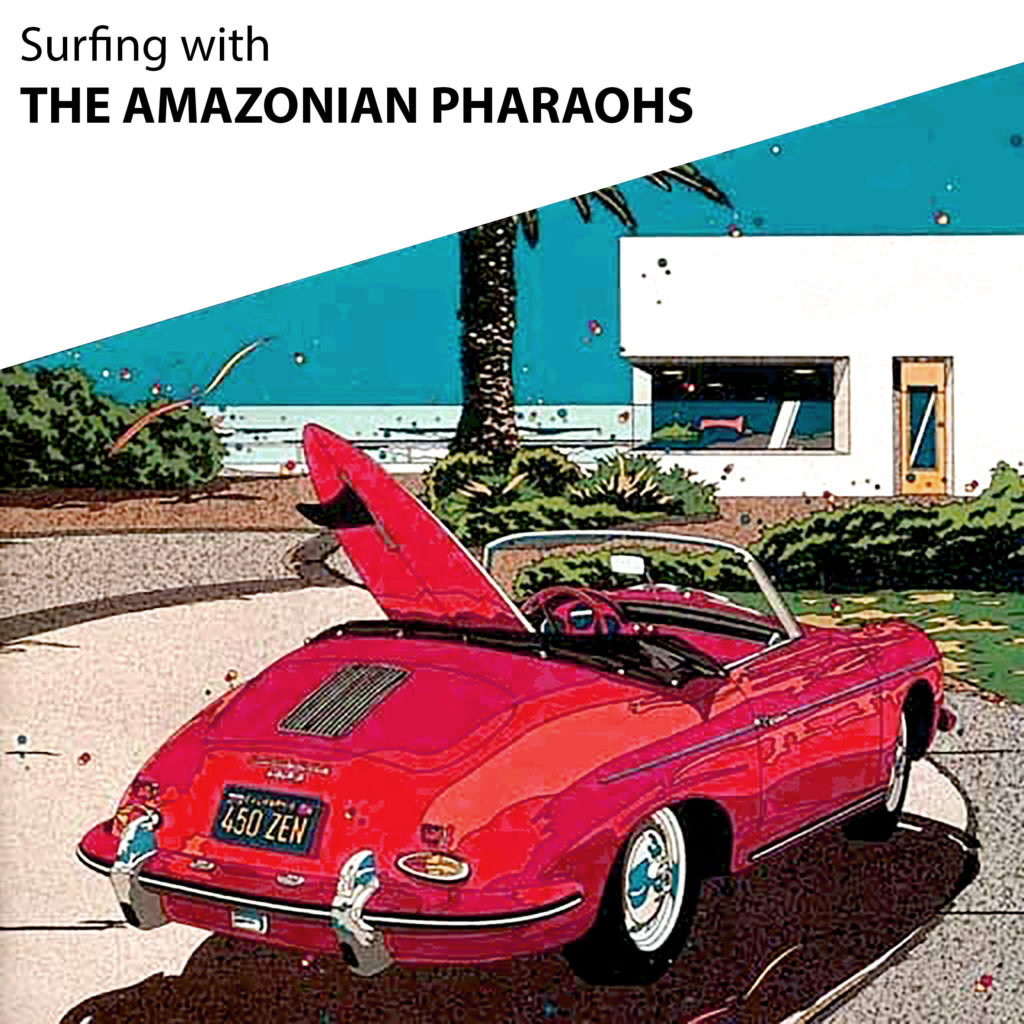
I’m also putting together my own new outfit for jamming, recording and touring. This is twangy! and it’s coming right out of Fish Island. You’ll see my ne
w venture The Fish Island Pharoahs echoing out from the studio rooftop early in the New Year but keep an eye out in Peru too. I’ll be landing in Lima on a whole new adventure and bringing the Pharaohs with me as the Los Faraones Amazonica while also taking time to document the music scene and catch-up with some great friends who are legends to the music of Peru – Stay tuned.

Keeping Cambodian rock and roll alive
An interview featured on the website for The Australian Centre for the Moving Image (ACMI).

Jackie Dixon
Photographer and Filmmaker
Band founder and guitarist Julien Poulson spoke to us about Cambodia’s history, creative community and The Cambodian Space Project’s creative efforts to revive and reimagine the lost sounds of Cambodian rock ‘n’ roll.
The Cambodian Space Project has been at the forefront of an astonishing cultural revival in Cambodia since 2009. Singer Channthy Kak & musician Julien Poulson teamed up in Phnom Penh to sing back to life the lost divas & rock legends of Cambodia’s golden age of music, all but wiped out by the genocidal Khmer Rouge regime.
Cambodian-Australian filmmaker Jackie Dixon spoke to Julien Poulson in the lead-up to their free performance at ACMI this weekend.
Jackie Dixon: How did your passion for music start?
Julien Poulson: Early on, I had been interested in older, earlier music growing up in Hobart and, again, record collecting and collecting things that were already vintage or heritage artifacts, things that my uncles had discarded and left around, so old hi fi systems, cheap guitars, and amplifiers.
At that time in Tasmania, we were isolated. We were five years stylistically behind the rest of Australia, at least it seemed that way. They say in Australia, music and in arts didn’t get the global revolution of the ’60s until the ’70s; it arrived even later in Tasmania. Tasmania’s got its own subculture happening.
Jumping forward to Cambodia, I didn’t have any interest in joining a band. I realised that the whole national identity of the place was attached to its musical heritage, even if people individually didn’t really realise or recognise that.
I thought it was bizarre that at concerts, Cambodian people don’t celebrate or applaud the singer, songwriter, or the front person. They’re still dancing like it’s the 1950s. You know? Everyone dances, but the musicians and singers are decorative background pieces. That’s changed but at the start, I thought, “That’s interesting but everybody is connected to it.”
Then I started to realise that extent of the catalog of Cambodian music, particularly pre-war. Things became accelerated and became Cambodia-personified through decolonisation and having a young king on the world stage who is proudly encouraging design, art and forward expressive thinking through architecture, music, fashion, and movies. The music that was produced was sophisticated – it was poetic, very, very beautiful, it rocks. You know? It was really, really a powerful… Head and shoulders above many other places.
When I spoke to some of the older musicians, who have survived and are still playing, I mention that Cambodia got the Beatles in the ’60s, and they said… Well, no it’s earlier. When I mention the Beatles, people say, “No, the rock and roll started with Chubby Checker and doing the Twist”. The Twist was like this global craze, but the monks banned it initially in Cambodia, which only lasted for about three months before it popped up in films.
Then, of course, the American music came in through the GI radio and the Vietnam War. Certainly, added something to a lot of the later music. There was always this strong French stylistic thread through this music that I find fascinating to listen to. The imagery of the record covers, the fashion, the way people chose to celebrate through song. French pop influences were even creeping through.
Of course, music was only really accessed by the privileged set. However, the songs and songwriting were compelling. That did reach the ears of everybody. There were clubs in remote places like Battambang.
Sinn Sisamouth – people call him the Elvis of Cambodia because of the sheer volume of output. Elvis didn’t write his own songs, but Sinn Sisamouth did. In a way, he’s more the Frank Sinatra, kind of an earlier crooner style. This is interesting, because it takes only a small group of creatives to have this huge output. There are lots of record covers of Sinn Sisamouth in places like in front of the Eiffel Tower or in front of a landmark in Berlin. I’m not sure that any of the other singers were able to travel.
It’s fascinating. I’m still excited about it. I still feel like I’m just beginning the research and the adventure.
JD: What was it that initially drew you to Cambodian rock and roll and inspired you to start The Cambodian Space Project?
JP: It was several things. First, I heard compilations in Melbourne, on PBS or RRR. Someone was playing the Cambodian cassette tape collection, Cambodia Rocks. Some guy went on a bus trip and he collected all these cassettes released it through a local label.
People were well-aware of it already and there were already groups kind of mining from this … It’s like taking something from Bollywood and making it funky and popular. There are already groups in California like Dengue Fever, there was some people experimenting with rap in Cambodia.
Yeah. It wasn’t as though it was completely unfamiliar to me. As I said, I didn’t have an instrument when I got to Cambodia, I didn’t have an intention to start a band, but after a while, sitting around in streets, food, restaurants and listening to music that Tuk Tuk drivers were playing, by the side of the road or getting around and realizing, “This is more of this” or, “This must be so and so” or, “Whoever is playing the organ on this must be on these other recordings” because they have a very distinctive style or the guitar sound or something, just fell in love with it.
After a while, I started meeting musicians and mostly people passing through, travelers, other westerners visiting and I remember having a conversation with the guy who had left New Orleans, his house had blown down there in the hurricane, and he had been on the road in southeast Asia ever since, and he’s a drummer.
I said, “I’d like to do something in Cambodia and make a band, record some of this kind of ’60s garage sound with the fuzz boxes and the driving beat. You’re a drummer. Maybe we could do something.” He’s going, “Yeah, man. Yeah. Sure, we can.” I said, “Okay, well, let’s shake hands and when you come back from Ho Chi Minh next time, let’s catch up and bring your drum sticks.” He said, “Yeah. Yeah but what’s it going to be called?” I had to think about it for a moment, and I had a brainwave. I said, “Well, it’s got to be called the Cambodian Space Project.”
He’s going, “Aw, man. That’s great, great, great, but why?” I said, “Well, because it’s got to be spacey, ethereal, cosmic and something that can start on the ground and aim high. It’s got to have one of those great Cambodian singers in it.” Of course, I didn’t know anybody at that stage. Later, I met Channthy and I met other musicians whose heritage was Cambodian as well.
One of the founding members was also Gildas Maronneaud. Gildas is a man about town. I still marvel at our journey and friendship together. It was interesting, because he could connect people like Channthy, who was surprised and unaware of why anybody would want to do this, whereas Gildas and Gaetan understood. Gaetan is who I told you about earlier: the French accordionist who was at Bophana center, piecing together the archives, feeding me music and artist information.
There’s also the City of Ghosts movie, which is a great cult film made in Cambodia. I loved it initially just because of its soundtrack. It all informed the concept of what I’d like to do with the Space Project.
When I met Channthy and she stepped into this already half-formed band as the lead, that’s where it lifted off and went into co-direction. In fact, I stepped away from it for about six months to work on an Italian project and the rest of the group continued and started some of their interesting early ideas.

It was very much a group effort. I might have been the first one on the scene with the naming of it, but it was a collective effort to begin with.

JD: Your partner in The Cambodian Space Project, Kak Channthy, she was an absolute rock star and the two of you brought new life to keeping Cambodian rock and roll alive. How has The Cambodian Space Project evolved over the years?
JP: Well, it evolved very quickly when she stepped aboard. We started to get many bookings in Cambodia, then suddenly we were traveling and performing everywhere, some 24 countries I think
I mean, at one point, early on, Channthy and I were married then realized that that wasn’t working quickly, and got unmarried. I mean, in a way, that was part of the show. The day we went to sign our divorce papers at the Australian Embassy, we both by this stage, very mutually happy to do this, we were sick of each other, but it was an intense time, relationship. If you can imagine being sat on a chair on a plane, a bus, a train, a boat, with somebody all the time, 24/7, and all the pressures of sudden notoriety coming into play, changed things very fast.
You know, strange things happened that were beyond our emotional grasp and control, but we kept working together. Then Channthy moved to Australia, and she wanted to stay in Australia. She lost her permanent residency. There was some problem with immigration and they kicked her out, which is heartbreaking to think about, because I sometimes think she would be alive today, and she’d moved to a nice place in Sydney and made a go of that for a year, but that made it difficult to continue bookings. You know, with her in a different country.

We booked to open the Glastonbury Festival, and everybody was there, waiting to go on and then Channthy didn’t turn up, because immigration held her up. It was not like a normal western group touring where everyone is abreast of their own passports and paperwork.
At that stage, it was the first time she could take full control of what she wanted to be and how she wanted to express herself as an artist. She was very shy of people calling her a star or any term like that. She liked to be alone, and she was surrounded by people and family but quite a lonely person really. She liked her own space.
Then when she was unexpectedly killed, it was an absolute tragedy for everybody. One of the saddest things in terms of her career and The Cambodian Space Project story – I would have imagined that she would have gone on to be a permanent fixture as a diva on the international stage.
What had changed then is the scene in Cambodia rapidly developed and it’s a very young country. Eighty percent of the population are under 30, so there’s a fast-moving, fluid kind of music scene. Not all of it is of quality, but it’s certainly quantity.
This year is the first time Cambodian Space Project has performed and toured in five years without a permanent singer at the head of the ship. It’s been very different for all of us.

JD: Times change and I can’t imagine how different things would have been from when you started to now. Can you tell us a bit about how Cambodia’s golden age of music from the 1960s and ’70s have evolved into Cambodian sounds of today?
JP: I think through this kind of amazing cultural renaissance that happened, really happened 10 to 12 years ago – it’s still flourishing, it’s still bearing fruit. In a way, the first step was Cambodian people recognising the value of their own heritage that had been passed over or forgotten from generation to generation.
It became revived through young Cambodian people seeking out their own cultural identity and connections through things like musical dance or art. I mean, it’s a small art form in Cambodia, but even the literature, the design, the old photos even, lost images, from the past. Images from old films. I can remember when we toured Cambodian Space Project to villages, we’d sometimes bring one of those old films and just put it on the big projector in the rice fields. People would be fascinated by it.
People love to see something about themselves. Today, you’ll hear a lot of contemporary reworkings of things that were always there, so people are sampling and using cool bits from old recordings and updating it and coming in with a new expression, and not just a pop kind of way.
Once upon a time, there were records, cassettes and CDs. Now it’s live streaming Spotify and TikTok.
For me, personally, I’m mostly interested in continuing to produce music in Cambodia but going even more retro with the equipment that we use. For example, making film clips on Super 8 or recording to old analog machines and even using live musicians as a group is retro these days.
JD: How do you recreate and innovate the lost sounds of Cambodian rock and roll with modern technology?
JP: You can’t really replicate the same thing. You can draw sonically from sounds and things, use some of the gadgets that are still popular for rock and roll recording artists, processing devices that were around in the studios in the ’60s and still in vogue today.
JD: Cambodia had a thriving music industry in the ’60s and ’70s but as we know, when the Khmer Rouge came in, a lot of that music was destroyed and a lot of those artists were lost. How has that informed your practice and the work that you do with The Cambodian Space Project?
JP: I think it’s the core of it and it’s totally informed it – it’s just such a haunting legacy. When you’re an outsider, reading through a catalog, it’s a cold relationship. You’re not actually connected to it. But when you’re in amongst people who have lived through it and all have contemporary experiences that relate directly to this music, it’s different.
I’m still driven by the joyous experience of performing it. It’s given me so much that I’m very committed to life in Cambodia, and any contribution that I can do as a music producer or an arts producer, I say yes to.
JD: That’s a very beautiful sentiment. I can imagine it would be a very emotionally complicated process, bringing these lost sounds back to life, and hearing all the stories. My own family talks about watching the burnings of all the movies and records outside of the market.
In your own way, how do you hope the legacy of The Cambodian Space Project would impact the emerging artists and music coming from Cambodia? As well as artists internationally.
JP: I don’t know. I hope that it does. I think artists stories and legacies do have impact and do resonate a lot longer than over time.
The Cambodian Space Project was created for fun and the adventure and the mystery of discovery. We didn’t realize what would happen with it.
I think I’m only halfway through the journey, personally, and we’ve had a lot of people part of that story. It’s been this amazing kind of carousel of people who are getting on, getting off, getting on again and … Yeah. It’s its own subculture. I do hope that it’s a story that inspires and affects others.
I think for a Cambodian singer like Channthy, in Cambodia, it’s still a very enclosed society. Even in Australia, our current singer, most of her experience is only within the Cambodian community in Australia. She hasn’t even really been outside that world.
Channthy was a phenomena in that she was very worldly and globally interested and focused. I hope that young Cambodian people can also access that kind of way of being and seeing, traveling, and experiencing, because otherwise, it’s just kind of this phrase Khmer for Khmer or Khmer to love Khmer. It’s very, very kind of sweet and endearing but it’s very limiting.
You know, the more that young artists and young commentators and writers and people who shape the future of the cultural conversation can find the freedom to express beyond just being within the collective. That’s where I think we’ll see a small country have a very high creative yield. There’s certainly examples of that happening before and 1965 to ’75, really, those 10 years of golden era creativity and best exemplified through the songs and music.
JD: What is next for you personally and for the Cambodian Space Project?
JP: We’ve recorded a good new album in Melbourne recently. It’s the first time we’ve split the creative co-write right down the middle with two bands in one really.
I’ll go back to Cambodia and we’ll put sounds and vocals on all of that. It’s called the Golden Phoenix, which is the English title based on a Cambodian film, Sovanna Hong, which was a Cambodian ’60s classic.
Personally, I want to make a very low budget feature. There’s something that we’ve been developing for a few years now that stars all our local village as well as a black comedy called The Indestructible, based on a guy who can’t be killed but everyone is out to get him. He’s a real estate agent who sells swamps to foreigners. He’s a funny character who gets caught up in lots of jealousies and domestic intrigue.
It’s a platform that’s really based on the low budget cinema coming out of places like Kenyat. It’s a way to make a multilingual cross-cultural film that can be appreciated as much by the community at grassroots level as shown to foreigners elsewhere. That’s the challenge.
JD: Some exciting things on the horizon.
JP: Cambodia is always exciting. It’s a place that has given me so much as an artist and a creative. It’s an open studio. Anything that you do is applauded and celebrated there, which is very nice.

